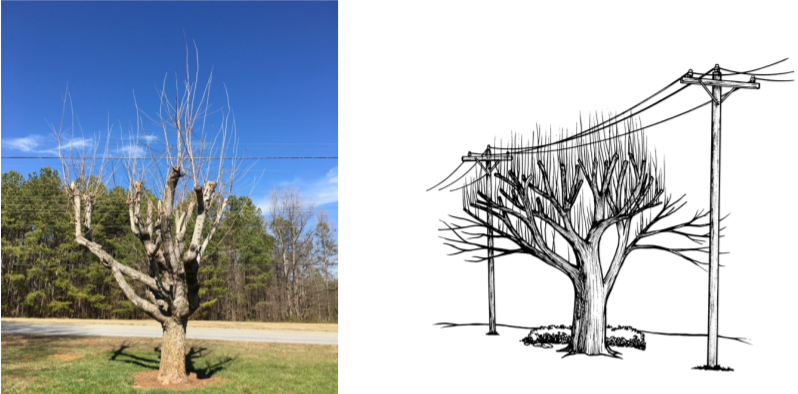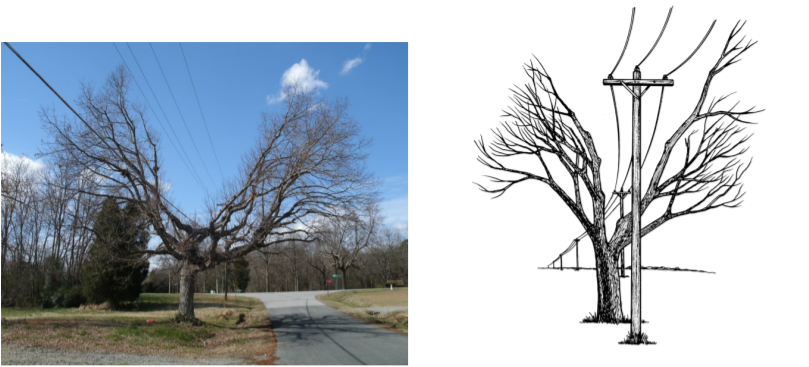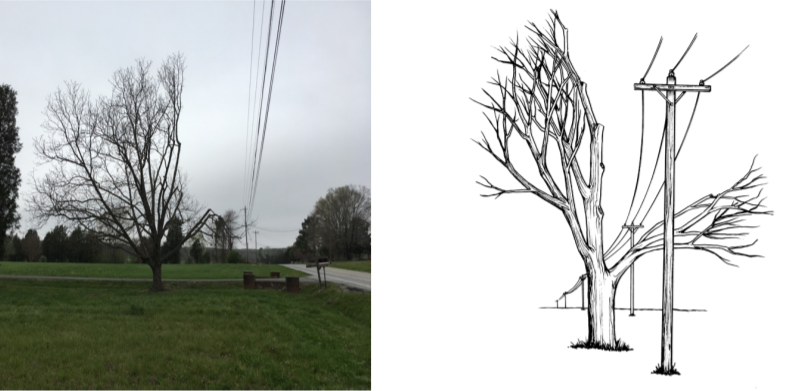CCEC's tree pruning practices conform to the procedures set forth by the American National Standards Institute (ANSI) in its publication Tree, Shrub, and Other Woody Plant Maintenance - Standard Practices (ANSI A300). These standards require the use of "directional" and "natural pruning" methods (endorsed by the National Arbor Day Foundation). Natural pruning is the practice of pruning branches back to a natural point of growth in the crown of the tree.
Natural pruning is healthier than tree topping, which is the indiscriminate cutting back of tree branches to reduce the size of the tree crown. Although topping generally leaves the tree with a more balanced appearance, topping stresses trees, makes them more vulnerable to insects and disease, leads to decay, and creates weak branches from the new growth creating a risk of them failing. By planting trees and shrubs away from power lines, you can reduce the need for pruning.

What is directional pruning?
- Removes only those branches that conflict with the power lines and promotes future growth away from them.
-
Instead of cutting the limbs back to unnatural stubs, branches are pruned back to the trunk or parent branch where trees normally shed them.
-
Numerous characteristics, such as species, growth rate, proximity to our facilities, and the voltage and construction of the line, are considered when pruning trees near our overhead lines.
- We prune trees to keep them from impacting our lines for five years, so the distance from the tree to our conductor after pruning varies from about four feet for slow-growing species (e.g., dogwood, magnolia, spruce) to over 15 feet for fast-growing species (e.g., maple, sycamore, poplar).
How will a tree look after directional pruning?
V-pruning and side pruning are the two main variations of directional pruning. Trees growing directly under power lines may appear U or V-shaped. Trees growing alongside power lines may appear L-shaped, or one side may be completed removed. The tree may often appear misshapen but this pruning is being performed to provide for safety and service reliability, not for aesthetic purposes. In general, trees growing near power lines will never have the potential to grow with a "natural" shape.



